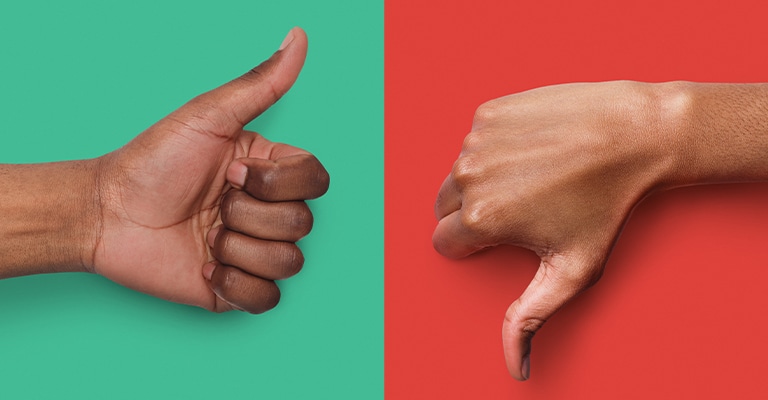Trade Show Analytics: Your Ticket to Maximizing Event Success
Trade shows are a special chance to show off your brand, meet new customers, and learn about your industry. But with so much time, effort, and money spent, how can you make sure it’s worth it? That’s where trade show analytics help. Trade show analytics let you see how well your activities are working. This guide will teach you the basics of trade show analytics. You’ll learn about important numbers to track and the tools that help you collect and understand the data. Whether you’re experienced or new to trade shows, knowing how to use trade show analytics can help you get the most out of your investment.
Why Trade Show Analytics Matter

Trade shows take money, time, and resources. Without analytics, you might not see how much impact your event really had. Trade show analytics help you measure success and find ways to improve.
When you know what works, you can do it again. Even more important, analytics show what doesn’t work so you can fix problems before the next event. This data-driven method can greatly boost your return on investment.
Trade show analytics aren’t just about numbers. They help you understand what your audience likes and how well your strategies work. Whether you’re an exhibitor or an organizer, using analytics helps you make smart choices instead of guessing.
Without analytics, you might rely on assumptions. This could lead to repeating mistakes and missing chances to grow. Using trade show analytics helps you improve, making each event better than the last.
Understanding the Role of Data in Trade Shows
Data is the key to planning a successful event. At a trade show, data comes from things like booth traffic, how people interact, and social media activity. This data tells you if your performance was great or not.
But just collecting data isn’t enough. The real power is in looking at this information to find trends and patterns. This helps you see what worked well and what didn’t. Knowing this is important for making better decisions for future events.
With clear data, you can make choices based on facts, not just guesses. It helps you use your resources wisely, focusing on what really works.
Key Benefits of Analyzing Trade Show Data
Analyzing trade show data gives you several benefits. First, it helps you understand your audience better. You can see which products or services people liked the most, so you can offer more of what they want in the future.
Second, data analysis helps you improve your marketing strategies. You’ll learn which promotions got the most attention. This information is super useful for making your marketing work better and cost less.
Finally, trade show analytics help you show your return on investment (ROI). By tracking leads, sales, and revenue, you can clearly prove how successful your trade show was. This is important for justifying future spending and getting support from others.
Essential Metrics to Track

Tracking the right numbers is key to successful trade show analytics. Not all data is equally important, so focusing on the most valuable metrics will give you the insights you need to improve.
Metrics like booth traffic, lead quality, and social media reach give you a clear picture of how well your event did. These numbers show how effective your strategies were and help you see where changes are needed.
To get the most out of your trade show, it’s important to track these key metrics regularly. This helps you measure success and spot trends over time.
Booth Traffic and Attendee Engagement
Booth traffic is easy to track. It shows how many people visited your booth, but it’s not just about numbers. The quality of those interactions is just as important.
Tracking how engaged visitors were tells you how interested they were in what you offered. Did they just walk by, or did they stop to ask questions? The more interested they are, the more likely they are to become leads.
You can measure engagement by seeing how long visitors stayed and what they did. Did they try a demo? Did they take a brochure? These insights help you improve your booth design and interaction strategies.
Lead Quality and Conversion Rates
While booth traffic is important, the quality of leads you get really affects your ROI. High-quality leads are more likely to become customers. Analyzing lead quality helps you focus on the prospects that are more likely to bring in business.
Conversion rates are another key metric. They show how many leads turned into actual sales or contracts. By tracking conversion rates, you can see how well your follow-up strategies and sales processes are working.
Improving lead quality and conversion rates should be a top goal. It’s not just about getting more leads; it’s about getting the best leads that are more likely to make money for your business.
Social Media Impact and Reach
Social media is a big part of modern trade shows. It lets you connect with attendees before, during, and after the event. Tracking your social media impact shows how well your online efforts supported your presence at the event.
Metrics like reach, impressions, and engagement rates give you a clear picture of your brand’s visibility. They help you see how far your message spread and how well it connected with your audience.
Social media analytics also show which types of content are most popular. This information is useful for planning future campaigns and making sure your social media strategy matches your audience’s needs.
Tools and Techniques for Data Collection

Collecting good data is key to trade show analytics. Without accurate data, your analysis won’t give useful insights. Using the right tools and methods is crucial for gathering the information you need.
There are different ways to collect data at trade shows. On-site techniques and post-event surveys each have their strengths. Combining these methods gives you a complete view of your event’s performance.
Technology also helps with data collection. Modern tools let you gather real-time data, making it easier to adjust your strategies quickly. This real-time feedback can be very helpful in making your event successful.
On-Site Data Collection Methods
On-site data collection is where everything begins. This includes tracking booth traffic, gathering attendee info, and watching engagement levels. Tools like lead capture apps make this process easier and help you collect accurate data quickly.
Another way is using interactive displays or QR codes that visitors can scan for more information. These tools not only engage visitors but also give you valuable data about what interests them.
Collecting data on-site lets you capture information when it’s fresh. This immediate feedback helps you make quick changes to your event strategy if needed, improving your overall performance.
Post-Event Surveys and Feedback
Post-event surveys are a great way to gather detailed feedback. These surveys let you hear directly from attendees about their experiences, likes, and suggestions for improvement.
By asking the right questions, you can find out valuable insights that you might have missed during the event. For example, you can learn where attendees felt something was missing or what they really liked.
This feedback is important for improving future events. It helps you understand what worked well and what didn’t, so you can refine your strategies and offerings.
Using Technology for Real-Time Analytics
Technology has changed how we collect and analyze data at trade shows. Real-time analytics tools let you monitor your event’s performance as it happens. This immediate feedback is crucial for making quick adjustments.
For example, if you see that booth traffic is lower than expected, you can try new strategies to attract more visitors. This could be as simple as boosting your social media promotion or changing your booth layout.
Real-time analytics also give you instant insights into attendee engagement. You can see which sessions are most popular or which products are getting the most attention. This data helps you focus your efforts where they are most needed, improving your overall event success.
Leveraging Analytics for Continuous Improvement

The real value of trade show analytics is using the data to keep improving. By looking at past performance, you can make smart decisions to make your future events better. This approach helps you keep moving forward.
Continuous improvement means regularly checking your numbers and adjusting your strategies as needed. It’s about learning from each event and using those lessons to get better results next time.
Analytics should be central to your event planning. By using data wisely, you can create a clear plan for success that you can act on and measure.
Adjusting Strategies for Future Shows
One of the biggest benefits of trade show analytics is that it helps you improve your strategies for future events. By looking at your data, you can see what worked well and what didn’t, allowing you to refine your approach.
For example, if your data shows that certain activities were more successful, you can focus on those in future shows. On the other hand, if something didn’t connect with attendees, you can change or remove it from your strategy.
Regularly updating your strategies based on analytics helps you keep getting better. This continuous improvement keeps you competitive and relevant in a changing market.
Aligning Analytics with Business Goals

It’s important to match your trade show analytics with your bigger business goals. This ensures your event strategies help you achieve your overall objectives. Whether you want to increase brand awareness, generate leads, or boost sales, your analytics should focus on these goals.
Start by identifying the key metrics that align with your business objectives. Then, use these metrics to measure your success and find areas to improve. This alignment makes sure your trade show efforts are not just tactical but also strategic.
By focusing on the metrics that matter most to your business, you can ensure your trade show participation delivers meaningful results. This strategic approach helps you get the most out of your investment.
Creating a Data-Driven Action Plan
Once you’ve gathered and analyzed your data, it’s time to make an action plan. This plan should outline the steps you’ll take based on the insights from your analytics.
A data-driven action plan ensures that your decisions are based on facts, not guesses. It helps you prioritize tasks and use your resources more effectively, focusing on what will bring the most value.
This plan should be flexible, so you can make adjustments as new data comes in. By regularly reviewing and updating your action plan, you can keep improving and work toward long-term success.
Closing Thoughts on Trade Show Analytics
Trade show analytics are more than just numbers—they are the key to making your event a success. By tracking and analyzing data, you can understand what works and what doesn’t, helping you improve your strategies for the future. From booth traffic and lead quality to social media impact and real-time changes, every piece of data helps you see how well your trade show is doing. With this information, you can make smart decisions that match your business goals and lead to real results. Embrace trade show analytics, and turn every event into a chance for growth and success.




